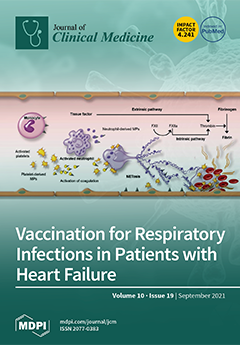Background: Delayed fracture healing continues to cause significant patient morbidity and an economic burden to society. Biological stimulation of non-unions includes application of recombinant bone morphogenetic protein-2 (rhBMP-2). However, rhBMP-2 use continues to be a matter of controversy as literature shows scarce evidence for treatment effectiveness. Questions: The objective of this study was to evaluate the effectiveness of rhBMP-2 treatment on long bone non-unions measuring union rate and time to union. Furthermore, we assess risk factors for treatment failure. Methods and patients: A total of 91 patients with non-unions of long bones were treated with rhBMP-2 (
n = 72) or standard care without BMP (
n = 19) at our institution. Patient characteristics, comorbidities, nicotine consumption, and complications were recorded. Bone healing was assessed by plane X-rays and clinical examination. Patients were followed up with for 24 months. Results: Overall, there was significantly faster bone healing after rhBMP-2 application compared to the no-BMP group (
p < 0.001; HR = 2.78; 95% CI 1.4–5.6). Union rates differed significantly between rhBMP-2 compared to the no-BMP group (89% vs. 47%;
p < 0.001). At the humerus, there was neither a significantly higher union rate in the rhBMP-2 (83%) compared to the no-BMP group (50%) (
p = 0.26;
n = 12) nor a faster bone healing with a median time of 9 months in both groups (HR = 2.01; 95% CI 0.49–8.61;
p = 0.315). The 33 femora treated using rhBMP-2 healed significantly faster than 9 femora in the no-BMP group (HR = 2.93; 95% CI 1.00–8.4;
p = 0.023) with significant differences in union rate with 85% and 44%, respectively (
p = 0.022). Regarding tibia non-unions, 25 out of 27 (93%) healed with a median of 9 months after rhBMP-2 application with no significant difference in the no-BMP group (33%) in time to union (
p = 0.097) but a significantly higher union rate (
p = 0.039). There was no effect of comorbidities, age, sex, soft tissue damage, or nicotine use on time to union, union rate, or secondary interventions. Conclusion: Consistent with the literature, overall, significantly higher union rates with reduced time to union were achieved after rhBMP-2 application. Femoral and tibial non-unions in particular seem to profit from rhBMP-2 application.
Full article






